Top 10 Pull Exercises For Building Muscle & Strength
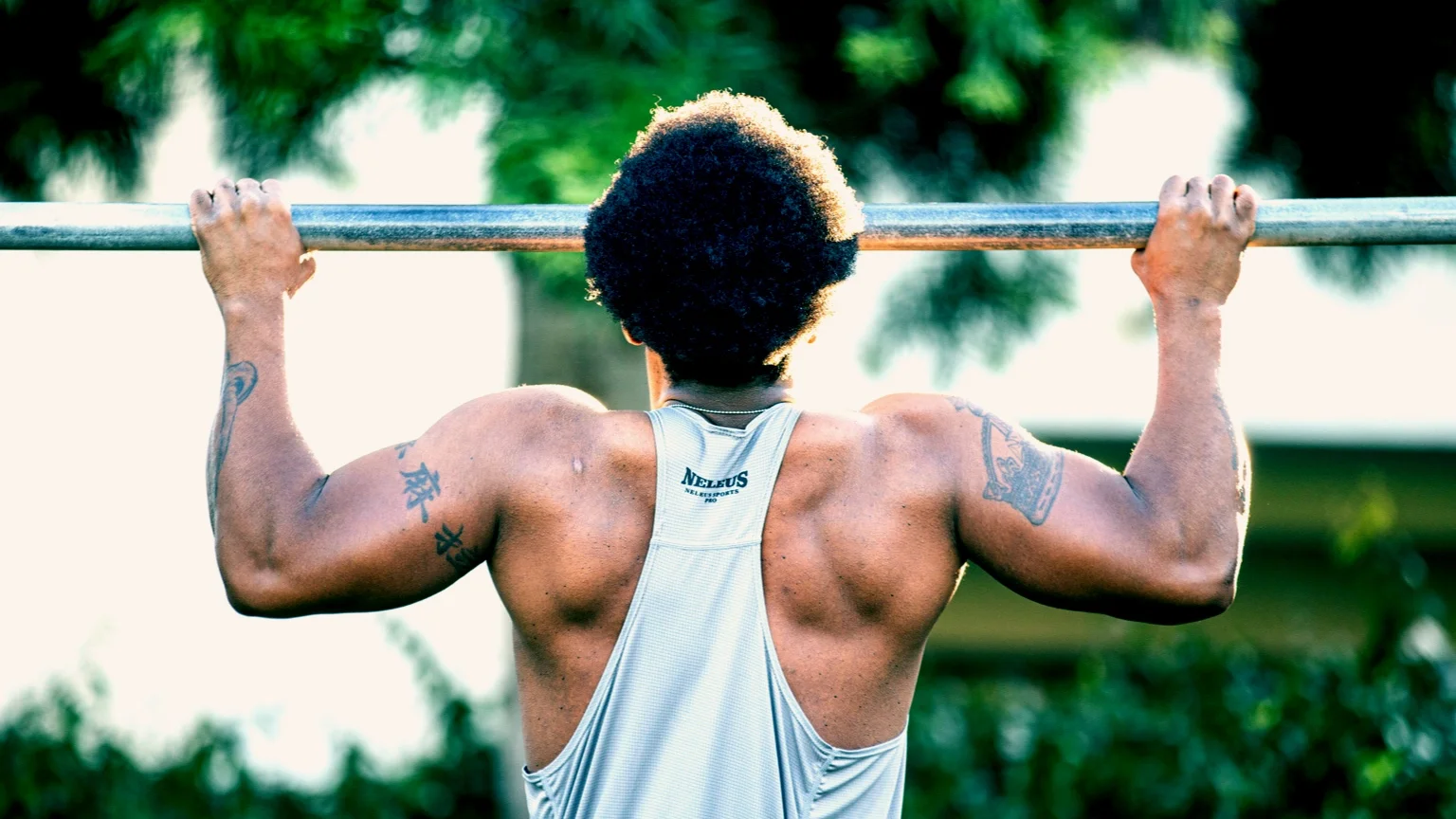
In strength training, pull exercises are those using movements that pull a weight towards your body. These exercises focus on using concentric contraction to target muscle groups in the back, arms and other muscles in the posterior chain. Examples of pull exercises include deadlifts, pull-ups and lat pulldowns. Pull exercises are an important part of strength training, as they help build muscle in the upper body.
Key muscles in the back include the latissimus dorsi (lats), trapezius (traps) and rhomboids. Pull exercises can also target muscles in the arms (biceps, triceps and forearms) and can help strengthen core muscles. A broader range of muscles in the body can also be worked by pull exercises when those muscles act as stabilizers during pull movements.
What is the push-pull-legs split?
The push-pull-legs split is a workout program that divides your routine into 3 types of exercise. On separate days of the week, you focus on each of push exercises, pull exercises, followed by a leg day. Many people use this split as a simple and effective way of working the whole body, doing 3 days of exercise followed by at least one rest day.
On pull day, the focus is on pulling exercises like rows, pull-ups and lat pulldowns. Pull day mostly works muscles in the upper body (the back, biceps and forearms). These exercises, when performed regularly in a push-pull split, are a great way to strengthen muscles. Pull exercises also help develop good posture, because they target muscles that support the spine.
When doing pull exercises, start with a warm up. Good warm up exercises include light rowing and stretching. Only then should you move onto specific pull exercises, such as pull-ups, lat pulldowns, bent-over rows, face pulls etc. It is important that you focus on maintaining proper form, and choose a level of exercise suitable for your current level of fitness.
Push-pull-legs is an effective workout plan for muscle growth. Because you target specific muscle groups of 3 separate days, you can maximize your time at the gym and hit an optimal level of intensity in your workouts. It’s a good idea to take regular rest days (to promote recovery) and you should consider incorporating some cardio and other exercise into your routine.
What muscles do pull exercises target?
Pull exercises target the back, biceps, forearms and a wide range of muscles in the posterior chain. This also includes the glutes, hamstrings and (for some movements) the calves. The primary back muscles targeted by pull exercises are the latissimus dorsi (lats), trapezius (traps) and rhomboids.
What’s the difference between compound and isolation pull exercises?
The primary difference between compound and isolation exercises is the number of muscles used to perform the exercise. Compound exercises target multiple muscle groups, whereas an isolation exercise targets just one specific muscle group.
Popular compound pull exercises include dumbbell pullovers (targeting pecs and lats) and pull-ups (targeting biceps, forearms and lats).
Isolation pull exercises include bicep curls (targeting the biceps) and dumbbell shrugs (targeting the trapezius muscles).
You should focus primarily on compound exercises in a strength training program. Compound exercises allow you to work a greater range of muscles, with great efficiency. And because they engage larger muscle groups, they also burn more calories than isolation exercises, which make them a great choice if weight loss is one of your goals.
Should I warm up with cardio before pull exercises?
Yes. Cardio is a great way to warm up before any workout. We recommend you start with light cardio, such as jogging and cycling. Cardio increases your heart rate and prepares your muscles to be worked. Warming up also reduces the risk of injury.
Here are our top 10 pull exercises for building muscle and strength:
1. Deadlifts
Deadlifts are a weightlifting pull exercise that targets muscles in the back, arms and legs. Because this exercise works muscles in both your lower and upper body, deadlifts can be a very effective workout in your strength training plan.
The primary muscles targeted by deadlifts are the glutes, hamstrings and spinal erectors. The latissimus dorsi (lats) are also worked in this exercise, helping to keep the bar close to your body during the movement.
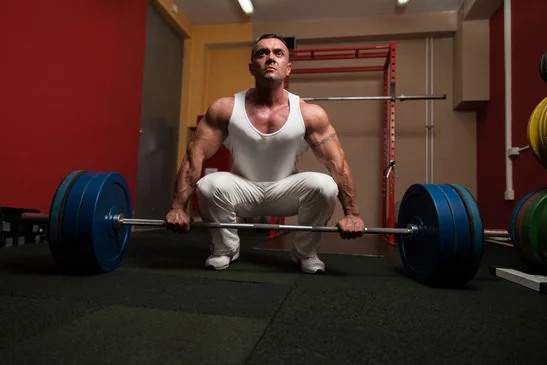
How to do a deadlift
- Prepare the barbell by ensuring it is properly loaded. Load the appropriate weight plates onto each end of the barbell and check they are securely fastened.
- Stand at the barbell with your feet shoulder-width apart and your mid-foot under the bar. Your toes should point slightly outwards.
- Bend at your waist and place your hands on the barbell. Your hands should be shoulder-width apart on the bar.
- While gripping the bar, bend at your knees so that your shins are touching the barbell.
- Keep your chest up and straighten your back. Look slightly up and forwards.
- Begin the lift by taking a deep breath. Then pull the barbell off the ground and stand up with the weight. Ensure your hips rise at the same time as your shoulders and torso.
- Lower slowly back down to the starting position, using your hips and knees first.
What is a common mistake when doing deadlifts?
A common mistake when doing deadlifts is not keeping your back in a neutral position. Do not round or arch your back when performing deadlifts.
2. Pull-ups
Pull-ups are another popular pull exercise that works back muscles – particularly the lats and trapezius muscles. They are also a good exercise for working the biceps. Pull-ups involve pulling your body up onto a bar, or sometimes up onto rings (with a ring pull-up). In a pull-up, you raise your body up until your chin is over the bar, and then lower back down to the starting position.
Pull-ups are a particularly effective upper body strength-building exercise, because they target key muscle groups by lifting all of your own bodyweight.
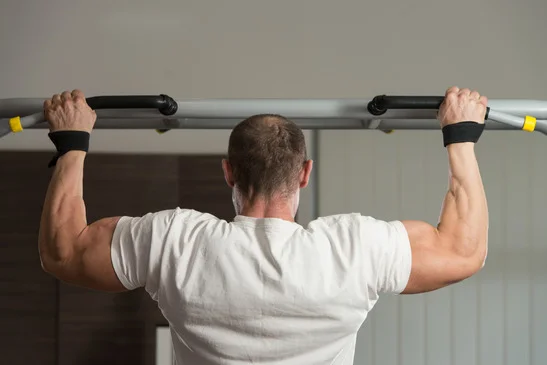
How to do pull-ups
- Grab a pull-up bar or rings with an overhand grip (palms facing away from you). Aim to grip the bar about shoulder-width apart.
- Lift your feet into a hanging position, with your arms fully extended and core engaged.
- Pull yourself up in a controlled motion until your chin is above the bar or ring, keeping your elbows close to the sides of your body.
- Lower yourself back down to the starting position and repeat for the target number of reps (typically 8-12 reps).
What is a common mistake when doing pull-ups?
A common mistake when doing pull-ups is using momentum to help lift your body or lowering your body too quickly. This can making building strength and muscle control less effective. Focus on slow, controlled motions when lifting and lowering your body. It’s also a good idea to engage your core throughout the movement and maintain proper form.
3. Chin-ups
Chin-ups are a similar pull exercise that also use your own body weight to target back muscles and biceps. Unlike pull-ups, chin-ups use an underhand grip and this places greater emphasis on muscles in the arms and chest.
How to do chin-ups
- Grab a pull-up bar with an underhand grip (palms facing towards you). Aim to grip the bar about shoulder-width apart.
- Lift your feet into a hanging position, with your arms fully extended and core engaged.
- Pull yourself up in a controlled motion until your chin is above the bar or ring, keeping your elbows close to the sides of your body.
- Lower yourself back down to the starting position and repeat for the target number of reps (typically 8-12 reps).
What is a common mistake when doing chin-ups?
Similar to pull-ups, a common mistake when doing chin-ups is using momentum to help pull yourself up. To get the most out of each rep, focus on slow and controlled motions when raising and lowering your body.
4. Bent-over rows
Bent-over rows are a good pull exercise for building back strength and size. A bent-over row is a compound exercise that primarily targets the latissimus dorsi (lats) and rhomboids.
The classic version of this exercise is the barbell bent-over row, but there are also variants that use dumbbells. Beginners may want to start with a one-arm dumbbell row before moving onto the full barbell bent-over row. The one-arm version of this exercise requires less coordination, balance and stability.
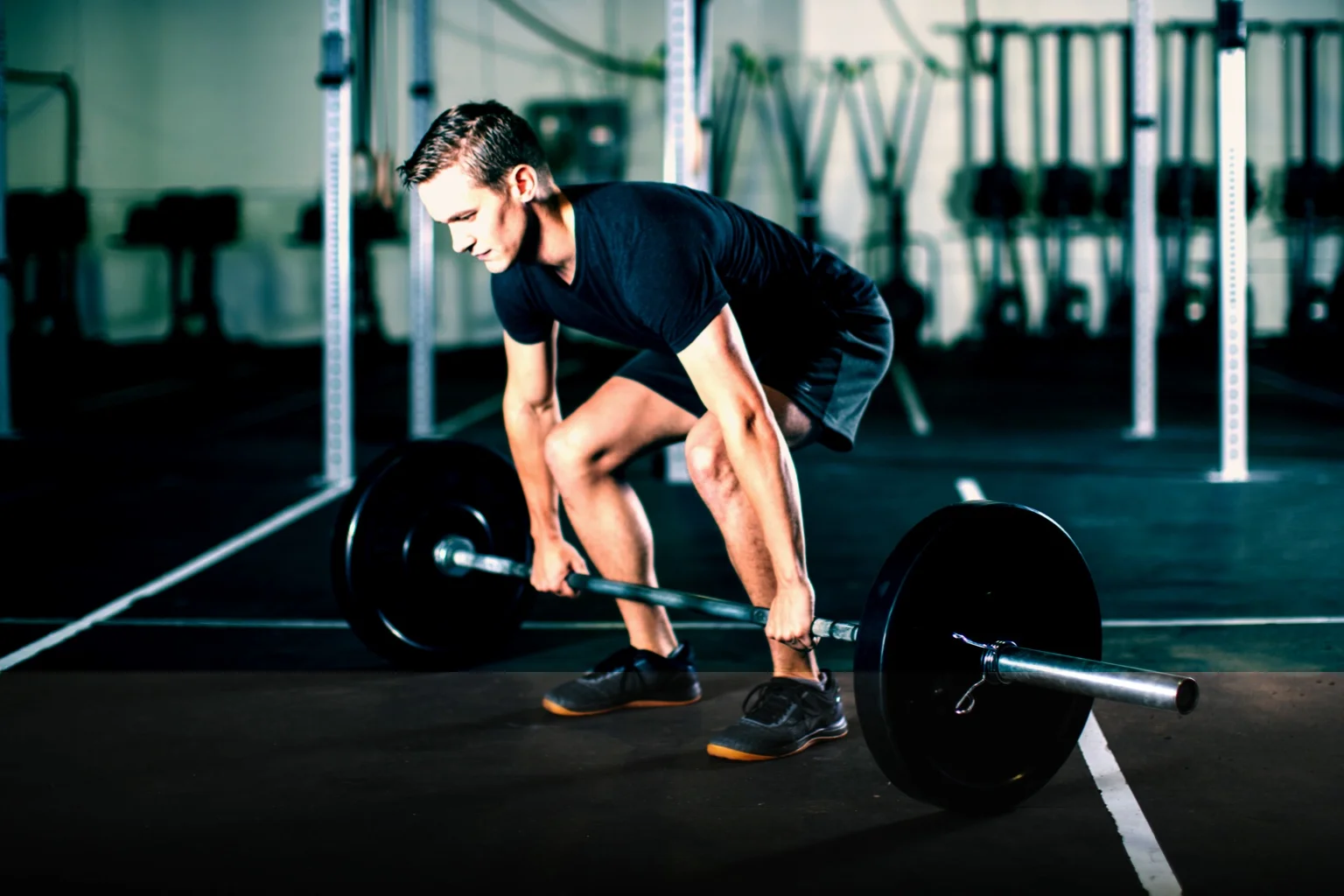
How to do bent-over rows
- Stand at the barbell with your feet slightly wider than hip-width apart. Make sure your toes line up with the barbell when looking straight down.
- Bend at the hips and bend your knees so that your torso is just above parallel with the floor. Keep a natural arch in the back, but do not have an excessive arch.
- Ensure the barbell is directly below your shoulders, so that your arms point straight down when grabbing the bar.
- Without moving your back or changing your position, pull both arms directly up towards the ceiling until they reach shoulder height (or slightly higher).
- Lower the weights back to the starting position, optionally placing the weight on the floor between each rep. In the Penlay version of this row, you place the weight back on the ground after each rep, which is good to building power.
- Repeat the steps for the desired number of reps.
What is a common mistake when doing bent-over rows?
A common mistake when doing bent-over rows is rounding your lower back during the exercise. This can put extra strain on your spine and increases the risk on injury.
5. Dumbbell pullovers
Dumbbell pullovers is a great bench exercise for building upper body strength, targeting muscles in your chest, back and, to an extent, your shoulders. The main muscles worked by dumbbell pullovers are the pecs and lats.
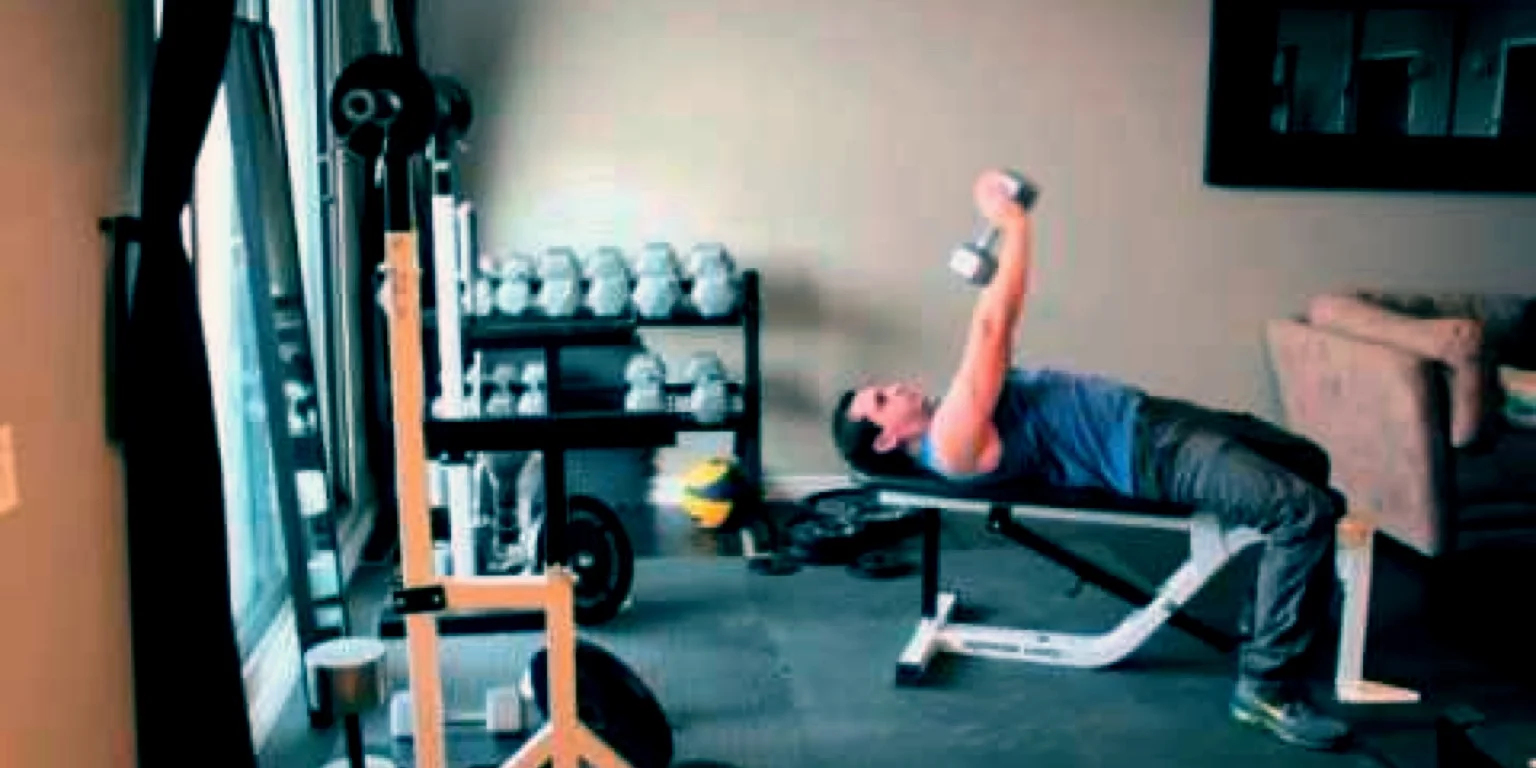
How to do dumbbell pullovers
- Lie on a flat bench with your feet placed firmly on the floor. Hold one dumbbell with both hands above your chest, with your arms extended straight up. Slide up the bench so that your head is just slightly off the bench.
- With your elbows slightly bent, slowly lower the weight back behind your head until it is just below shoulder height.
- Pull with your lats to bring the weight back to the starting position with the weight above you and arms fully extended.
- Repeat the steps for the desired number of reps.
What is a common mistake when doing dumbbell pullovers?
A common mistake when doing dumbbell pullovers is letting your body raise from the bench. This causes an uneven distribution of weight and stress through your core and back muscles, which reduces the effectiveness of the exercise. To avoid losing contact with the bench, keep your lower back and butt firmly on the bench throughout the movement.
6. Face pulls
The face pull is an important pull exercise that helps build muscle in the shoulders and upper back. This exercise primarily targets the rear deltoids and rotator cuff muscles.
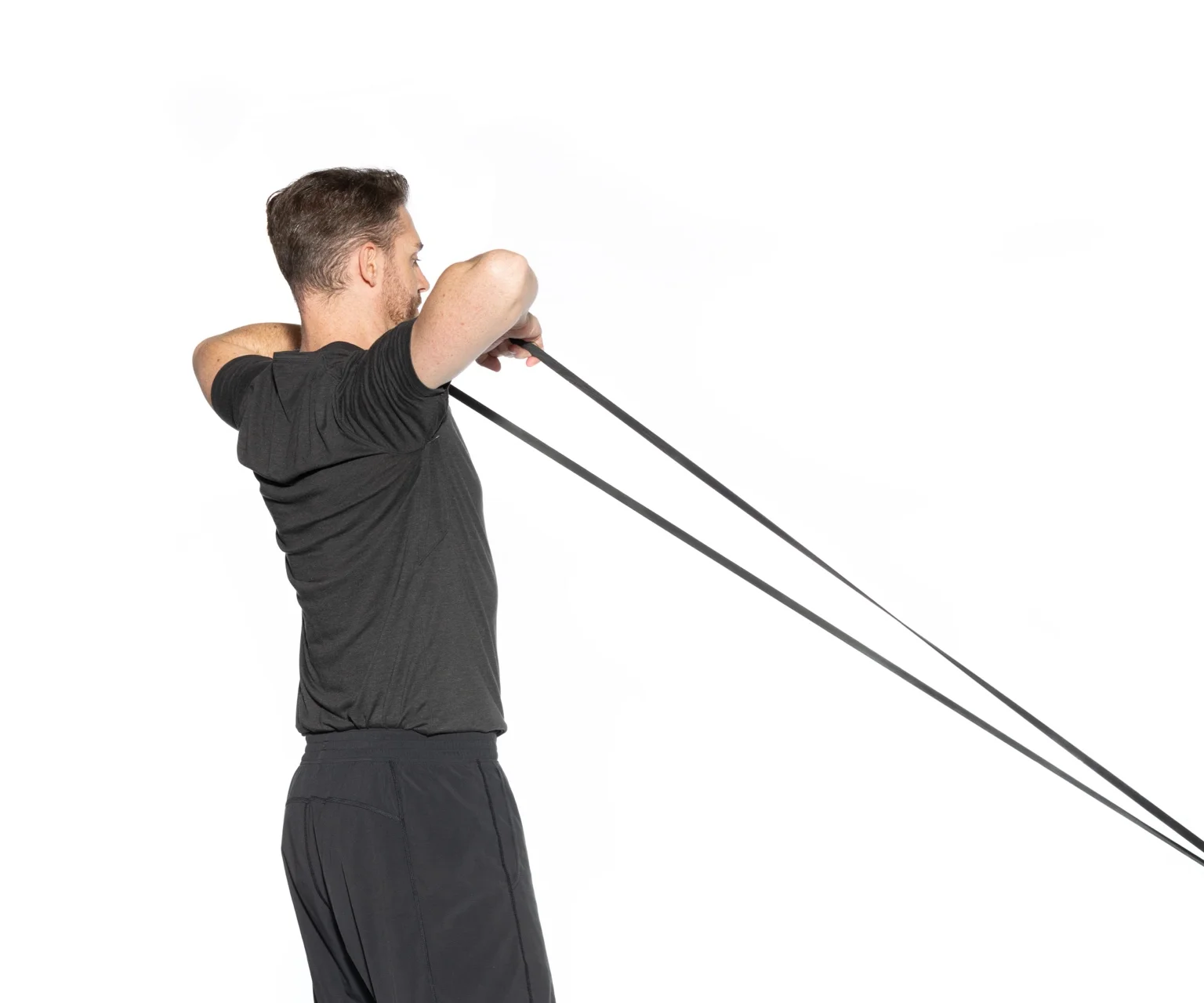
How to do face pulls
- Attach a rope handle to the high pulley of a cable machine and grab the ends of the rope in each hand.
- Take a few steps back so that there is some tension in the cable.
- Position your feet shoulder-width apart, with your knees slightly bent.
- Position your hands at eye level and pull the cable back towards your face, with your elbows pointing strictly outwards rather than up or down. Maintain this elbow position throughout the exercise.
- Squeeze for 1 or 2 seconds, before returning back to the starting position in the same reverse motion.
- Repeat the steps for the desired number of reps.
What is a common mistake when doing face pulls?
A common mistake when doing face pulls is not keeping your elbows pointed outwards, as you go through each movement.
7. Lat pulldowns
Lat pulldowns are a machine exercise that target muscles in the back. As suggested in the name, the primary muscles targeted are the latissimus dorsi (lats). In the traditional form of this exercise, you sit down with a wide bar grip on a pulley, and pull the bar down towards you.
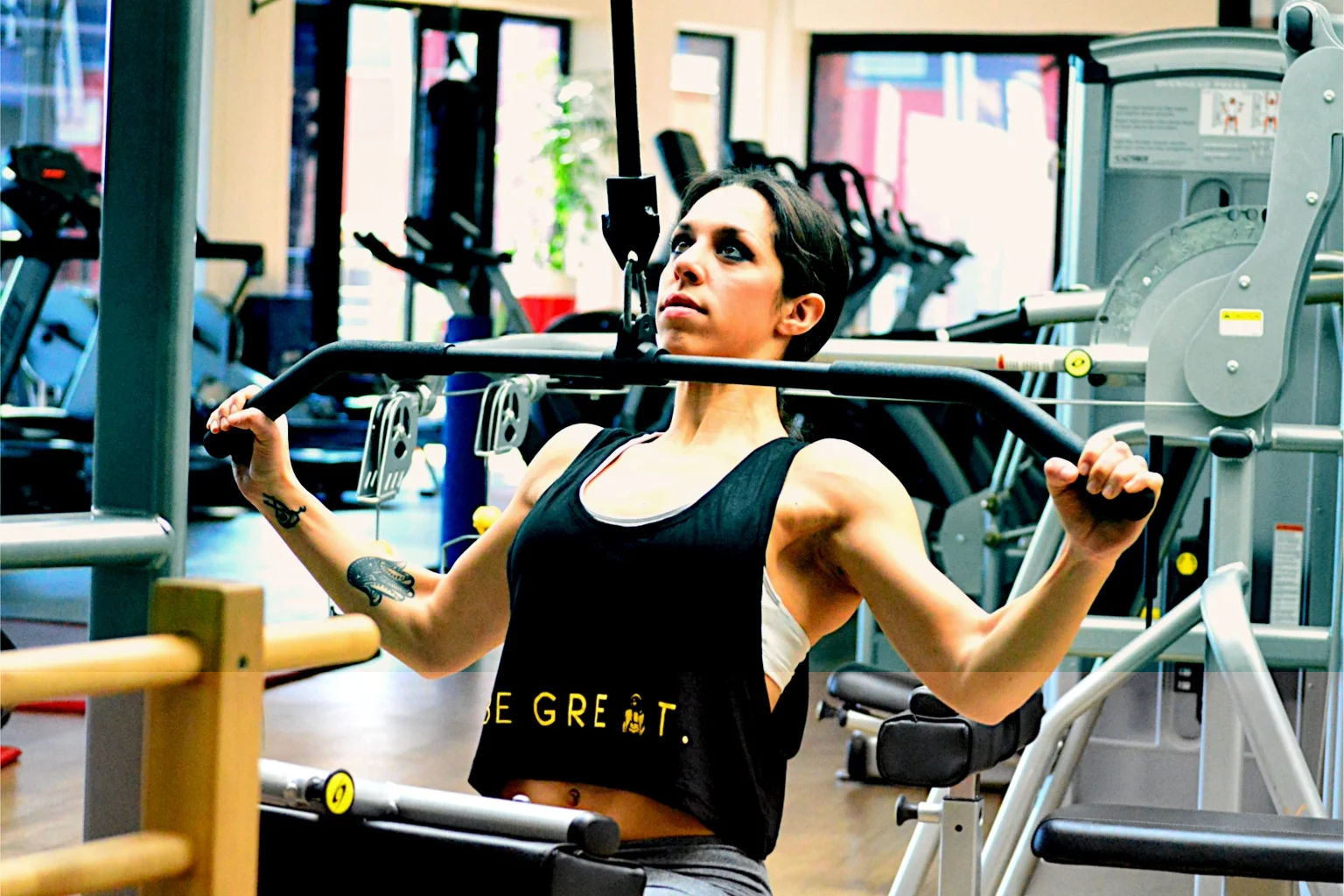
How to do lat pulldowns
- Sit on the lat pulldown machine, and place your feet on the floor so that your shins touch against the pads on the machine. Adjust the lat bar so that it rests gently on your thighs.
- Set the appropriate weight on the machine.
- Grab the wide grip bar with a comfortable position (typically shoulder-width apart). Pull the bar down and sit down gently back into the position.
- Pull down on the bar, with your elbows back in a slow, controlled motion.
- Return the bar back to the starting position.
- Repeat for the desired number of reps.
What is a common mistake when doing lat pulldowns?
A common mistake when doing lat pulldowns is using too much momentum when pulling the bar, which reduces the effectiveness of the exercise. It’s important to fully engage the lats when doing each movement, rather than using upper body strength to pull down on the bar with speed and momentum.
8. Bicep curls
Bicep curls are a popular isolation pull exercise that works the biceps, the large muscle at the front of your upper arm. This exercise is a great way to build upper arm strength.
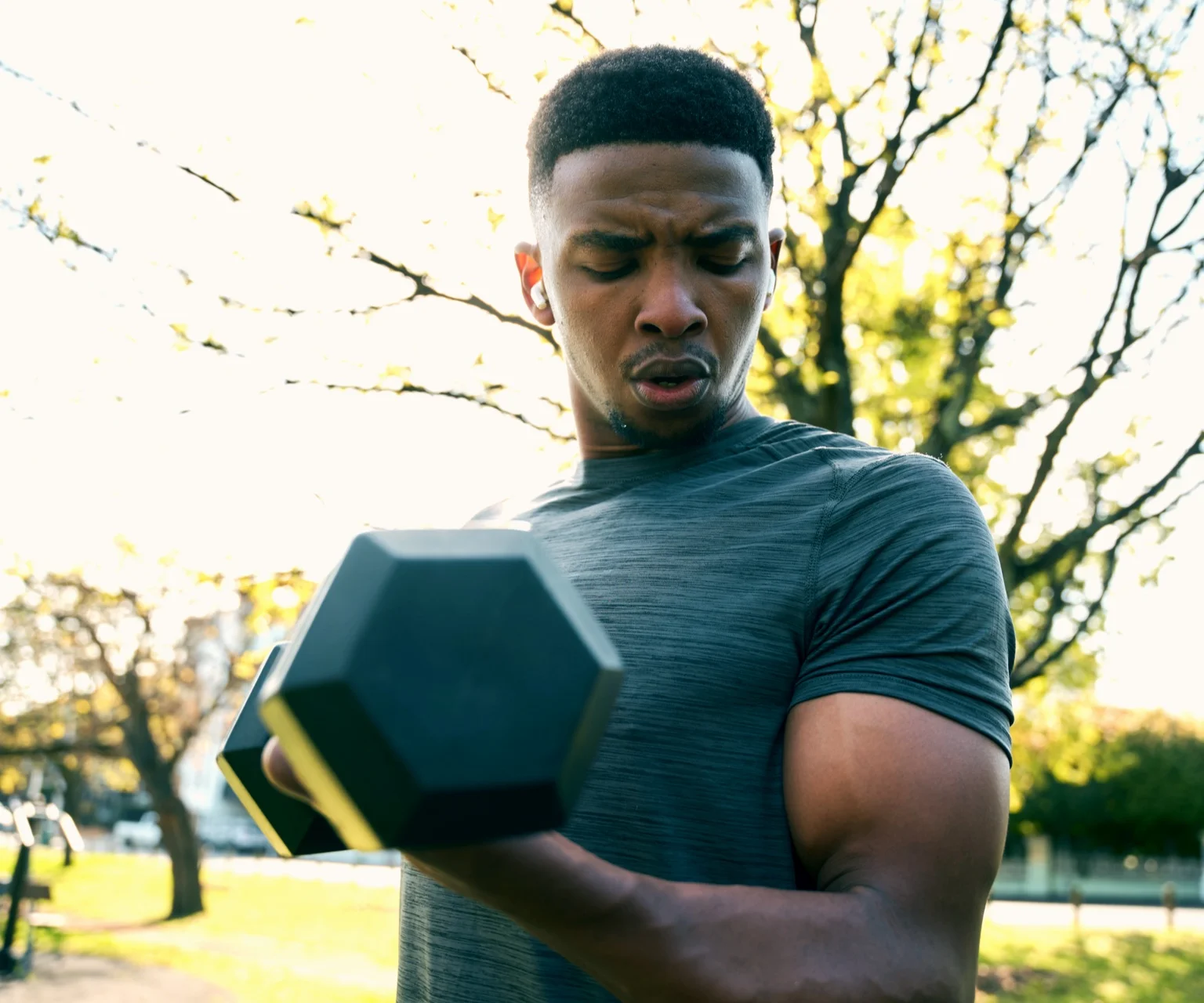
How to do bicep curls
- Stand with your feet hip-width apart and hold a dumbbell in each hand. Ensure your palms are facing up, with your shoulders back and elbows tucked.
- Bend your elbows to pull the weight up towards your shoulders.
- Keep both arms close to your body and avoid swinging your back. Also avoid jerking the weights during each motion.
- Squeeze the biceps at the top of each movement, then slowly lower the weight back down in a controlled movement.
- Repeat for 8-12 reps.
What is a common mistake when doing bicep curls?
A common mistake when doing bicep curls is using momentum to swing the weights during the movements. Using momentum means the targeted muscles are not being worked effectively, and also increases the risk of injury as the movement works unintended muscles.
9. Single-arm dumbbell rows
Another popular compound pull exercise is the single-arm dumbbell row. This exercise uses a dumbbell and primarily targets the latissimus dorsi (lats), rear deltoids and trapezius (traps).
How to do single-arm dumbbell rows
- Kneel onto the bench with your right leg and grab the front of the bench with your right hand. Position your left leg standing wide out from the bench. Keep your leg straight.
- Maintain a slight arch in your back with a neutral spine.
- Pick up the dumbbell with a straight wrist.
- Pull the dumbbell up to your chest, keeping your back parallel to the ceiling.
- Lower the weight back down, keeping a slight bend in your elbow.
- Repeat for 8-10 reps per side, then switch sides.
What is a common mistake when doing single-arm dumbbell rows?
A common mistake is over-arching your lower back. This puts unnecessary strain on your spine, which increases the risk of injury. Focus on keeping your back in a neutral position throughout the movements.
10. Dumbbell shrugs
Dumbbell shrugs are a great pull exercise that target the trapezius muscles (traps).
How to do dumbbell shrugs
- Stand with your feet shoulder-width apart, with a dumbbell in each hand. Keep your palms facing inwards.
- Keeping your chest out and back tight, lift the weight by shrugging your shoulders straight up.
- Squeeze at the top of the movement, then lower the weight back to the starting position.
- Repeat for 8-10 reps.
What is a common mistake when doing dumbbell shrugs?
Rolling your shoulders is a common mistake that reduces the effectiveness of dumbbell shrugs. The primary target of a dumbbell shrug is the trapezius muscles (traps), located at the back of the neck and upper back. Because this is an isolation exercise, rolling your shoulders reduces the effectiveness on the target muscles and engages unintended muscles in the shoulders.
